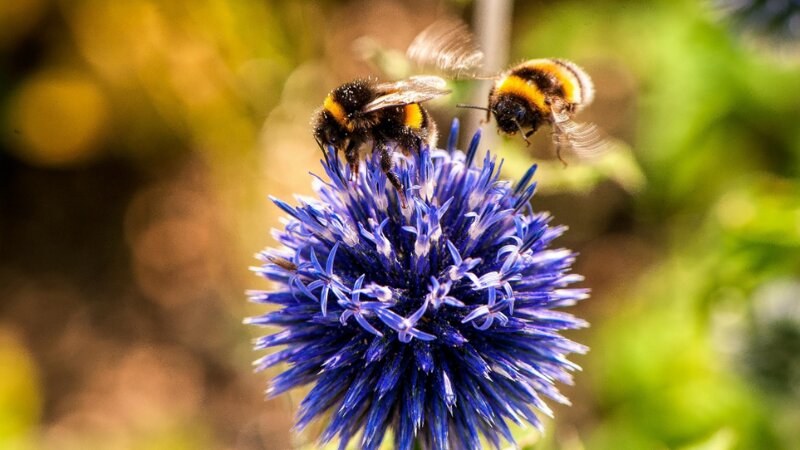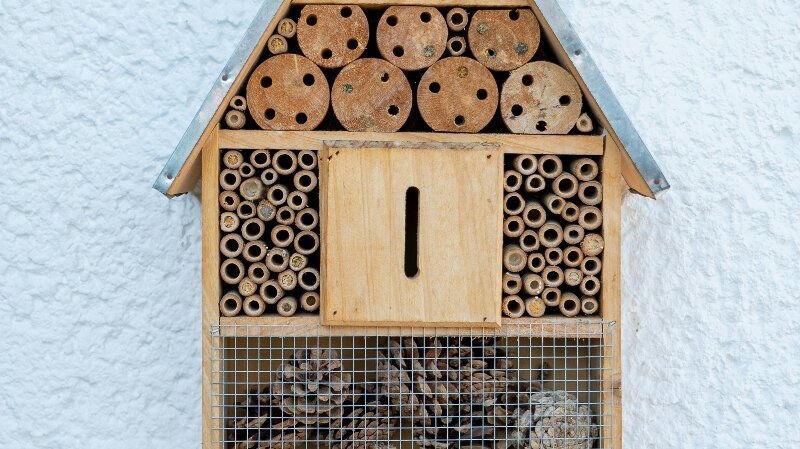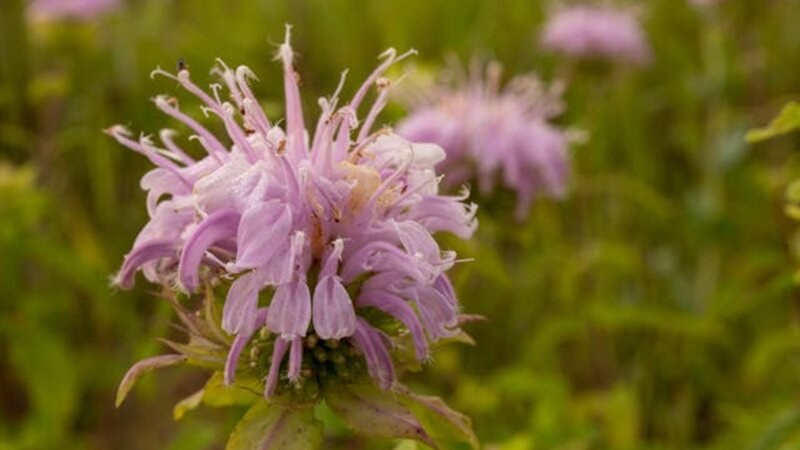10 Ways To Create A Pollinator-Friendly Garden
Reading time: 6 minutesBees, butterflies, and the wind play a significant role in pollination. You can say they’re pretty much the superheroes of our ecosystem. And currently, they’re facing a threat to their survival.
The fate of the American bumblebee, a cherished native of Canada, hangs precariously in the balance as experts project an alarming decline of 99 percent in population over the last thirty years.
By choosing locally grown, pollinator-friendly plants, you can attract bee pollinators to your garden, ultimately supporting the ecosystem's health. Creating more gardens for pollinators is a great way to ensure we care for these fuzzy insects.
Here are a few ways to play your part and create a pollinator-friendly garden.

1. Plant in Groups
Consider adopting a strategic approach to planting in your garden by grouping plants together. For instance, creating a large cluster of purple prairie clover enhances your garden's visual appeal and significantly benefits pollinators.
This method allows bees and other pollinators to quickly locate and access their preferred nectar and pollen sources. By concentrating on one type of plant at a time, bees can pollinate more efficiently and conserve energy in the process.
2. Water and Feed the Right Way
To ensure the vitality and productivity of your garden, provide care through appropriate watering and feeding practices. The right amount of water enhances the availability of nectar and pollen, which are essential for pollinators' well-being.
Using natural fertilizers, such as compost, enriches the soil with nutrients, promoting healthy plant growth. For a more targeted approach, consider using slow-release fertilizers that gradually supply nutrients over time, minimizing the risk of over-fertilization.
Additionally, diligent weed control is important to maintain a safe and conducive habitat for pollinators. Remove weeds manually to prevent potential harm to these essential insects. This will ensure that your garden remains a thriving sanctuary for pollinator activity.
3. Trim and Tidy Up
Regular pruning and deadheading are essential. Trim plants and remove spent flowers. This will keep your garden looking vibrant and stimulate blooming.
This process ensures bees easily access flowers by eliminating barriers and creating a more welcoming environment. The result is an increase in pollen and nectar production, benefiting both the plants and pollinators.
4. Bare Soil Hideouts and DIY Cozy nests
Encourage native bees to nest in your garden by preserving areas of bare soil tucked away behind your plants. These spots provide essential nesting grounds for ground-nesting bees, allowing them to thrive in their natural habitat.
If you’re big on DIY, consider constructing or acquiring nesting boxes for cavity-nesting bees. Use materials such as hollow reeds or untreated wood equipped with pre-made tunnels to offer these pollinators ideal nesting sites.
This not only supports the biodiversity of your garden but also contributes to the conservation of native bee populations by providing them with safe and suitable homes.
Here’s a guide on building a bee home.

5. Quench Their Thirst
Ensure bees have access to water by creating a safe drinking station for them. Place marbles in a shallow dish filled with water to provide a landing surface for bees. This allows them to hydrate without the risk of drowning.
6. Grab the Right Seeds
Choosing the right seeds for your garden requires an approach that aligns with your local environmental conditions and gardening goals. When selecting seeds, consider factors like temperature, sunlight exposure, and moisture levels.
It's also important to evaluate the space you have available in your garden and select plants that will fit well without becoming overcrowded. We’ll discuss some native plants up ahead.
Think about what you hope to achieve with your garden—whether you're interested in cultivating ornamental plants that enhance your garden's aesthetic appeal or growing edible plants that can contribute to your kitchen.
7. Skip the Leaf Blower
Leaf blowers are super noisy with polluting, two-stroke engines. This can affect pollinator communication and harm the respiratory health of living things in the surroundings. Use a rake instead.
8. Opt for Bees’ Favourite Colours
Select flowers that are particularly attractive to bees and pollinators, such as purple, yellow, white, and blue, with a preference for single, fragrant blooms.
Envision your garden as a welcoming space for bees, adorned with a vivid array of their preferred colours. These colours appeal to the visual senses and facilitate easier access for bees to nectar and pollen, thanks to the single, open structure of the blooms.
9. Avoid Overusing Lawn and Pest Control Products
Overusing store-bought products in your garden can be a big problem for pollinators and the environment. Not knowing and/or following the correct guidelines can have undesired consequences.
When available, go for composts, natural fertilizers, and Health Canada-approved products for efficient and eco-friendly pest control in your garden, ultimately supporting a healthier environment. Whenever in doubt, your best option is to turn to the experts. They are licenced, trained, and equipped to provide the right services to keep your outdoor space buzzing.

10. Choose Native Plants and Evergreen Species
Opt for native plant species adapted to the Western Canada climate. Native plants provide the most suitable nectar, pollen, and habitat for local pollinators.
Suitable Native Flowering Plants
- Purple Coneflower (Echinacea purpurea). Found in various regions across Canada, this perennial boasts vibrant purple flowers that attract bees and butterflies. Its sturdy structure and extended blooming period make it a great choice.
- Wild Bergamot (Monarda fistulosa). Also known as Bee Balm, this native plant is a favourite among bees and hummingbirds. Its lavender-pink flowers add colour to the garden and provide a pleasant fragrance.
- Common Milkweed (Asclepias syriaca). A crucial host plant for Monarch butterflies, the Common Milkweed's fragrant flowers attract various pollinators. It's a must-have for gardens aiming to support butterfly populations.
- Canada Anemone (Anemone canadensis). As the name suggests, this native plant is well-suited for Canadian gardens. Its white flowers add a touch of elegance while attracting bees and other pollinators.
- Goldenrod (Solidago spp.). Often unfairly blamed for allergies (it's actually ragweed), Goldenrod is a beacon for pollinators. Its bright yellow flowers, appearing in late summer and fall, provide a vital late-season food source.
- Eastern Columbine (Aquilegia canadensis). Sporting unique red and yellow flowers, this plant is a hummingbird magnet. It thrives in woodland settings and adds a touch of whimsy to the garden.
Suitable Evergreen Species:
- Eastern White Pine (Pinus strobus). While Eastern White Pine is commonly used in larger landscapes, it may be more suitable for spacious lawns due to its eventual height and spread.
- White Spruce (Picea glauca). White Spruce is an excellent choice for lawns, especially in colder regions. Its pyramid shape makes it an attractive and classic addition to the landscape.
- Eastern Hemlock (Tsuga canadensis). With its drooping branches, Eastern Hemlock can provide a unique and aesthetic touch to lawns, particularly in shaded areas.
- Balsam Fir (Abies balsamea). Balsam Fir is often used as a Christmas tree, but its symmetrical shape and fragrant needles can also make it an appealing lawn tree.
- Canadian Hemlock (Tsuga canadensis). Similar to the Eastern Hemlock, the Canadian Hemlock is suitable for lawns, providing an elegant and shade-tolerant option.
- Yew (Taxus spp.). Yew shrubs are versatile and can be used for foundation plantings, hedges, or as standalone lawn specimens. They’re often appreciated for their dense foliage.
The Lawn Care Experts You Can Turn To
Turn to Green Drop for expert lawn care nurturing designed with pollinators in mind. Our team of seasoned GreenKeepers specializes in lawn care services across Western Canada.
We love our friendly pollinators and are committed to equipping you with the insights needed to create a sanctuary for them.
Check out our lawn care packages designed to serve Calgary, Edmonton, Red Deer, Regina, Saskatoon, and Winnipeg areas.

